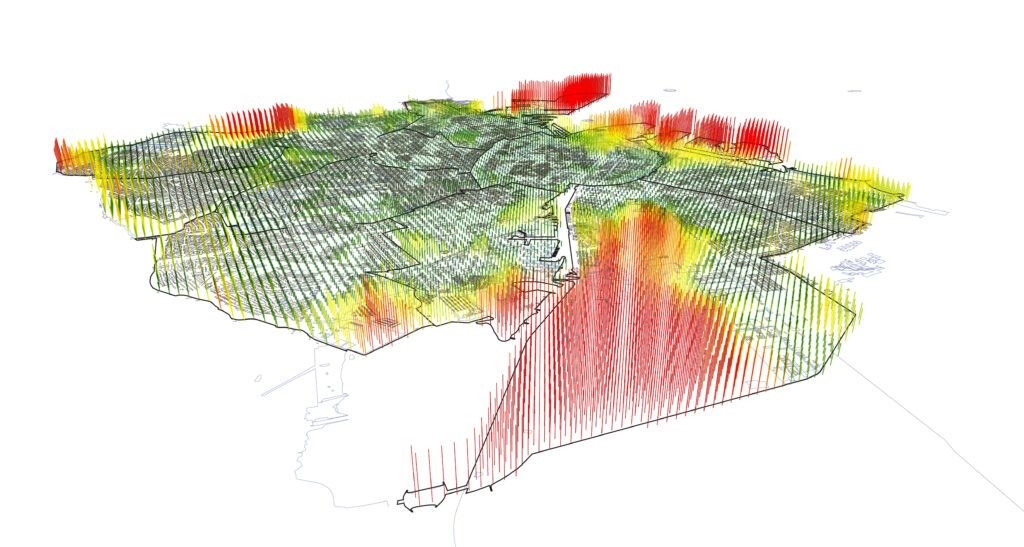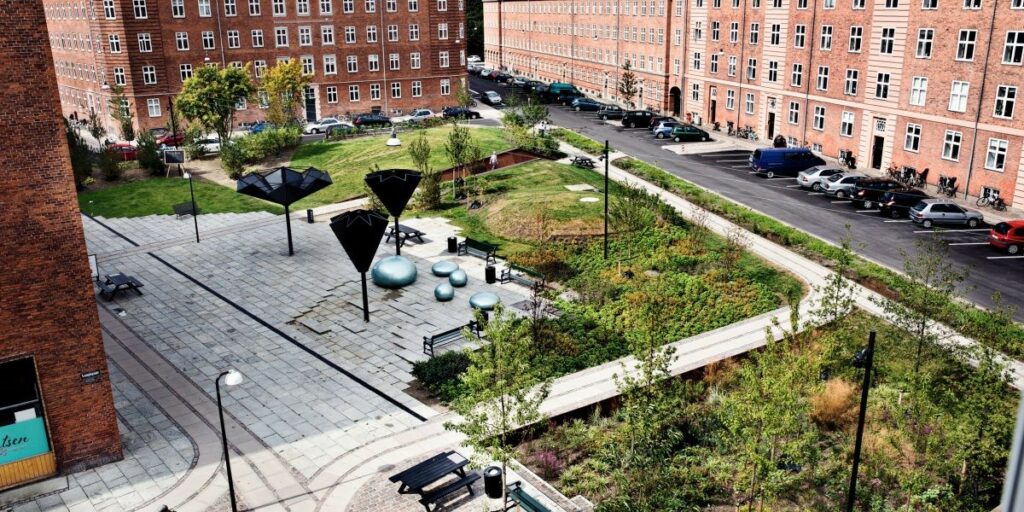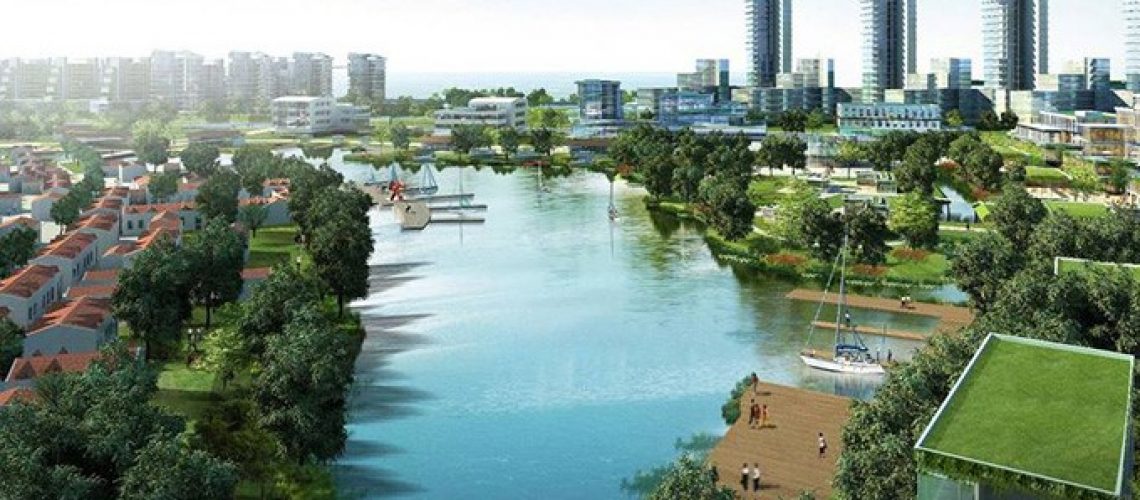Guest Post by Shantanu Kumar, 2021-2022 Sustainability Leadership Fellow, and Ph.D. Candidate in the Department of Civil Engineering and Construction Management at Colorado State University
Sustainability and resilience of cities are different, but intertwined concepts, and should be used in conjunction with each other when planning and designing cities (and their components). The presence of sustainability in the design phase ensures that the various components of cities (buildings, infrastructure, and natural spaces) are created and maintained through a cognizant allocation of resources while working within constrained budgets. It also ensures that these components do not lead to negative environmental impacts, facilitate positive economic growth, and promote a healthy quality of life. Resilience on the other hand is necessary to ensure that each of the components of cities can withstand the effects of climate change and other hazards (natural or man-made) and have a learning mechanism to improve the disaster preparedness planning for future disasters. Adoption of both sustainability and resilience in the planning and design phase of various components of cities is essential. Often, these terminologies are used interchangeably or in a siloed manner, which dwarfs their importance and their intertwined nature.
First, let us define sustainability and resilience for planning and designing cities
Sustainability in this context has been defined as “being able to retain the supply of natural resources while achieving economic, physical, and social progress, and remain safe against environmental risks that undermine the development”. The environmental risks here refer to the negative impacts on the environment due to developments of various components of cities. There are a few characteristics of a sustainable city that planners and other stakeholders should look for – accessibility of public transportation, widespread electric vehicle charging stations, presence of green spaces, improved water resource and waste management, promotion of urban farming, and adoption of green architecture. Though these characteristics do not convey the full extent of a sustainable city, it is a good starting point to encourage and adopt sustainable initiatives.
Resilience in this context refers to the “ability to absorb, recover, and prepare for future shocks (economic, environmental, social, and institutional). The ability to absorb refers to the disaster withstanding capability of the various components of a city. Considering that the hazards could be naturally occurring (like earthquakes, wildfires, etc.), and man-made (economic downturns, cyberattacks, etc.), it is essential for each component to not just be structurally robust, but also have initiatives in place to manage socioeconomic ebbs and flows. Leila Dillon characterized a resilient city as being reflective, resourceful, robust, redundant, flexible, inclusive, and integrated. These characteristics are well reflected in the definition of a resilient city (as defined above).
In addition to understanding the definitions of sustainability and resilience, it is important to understand the various components of cities. Buildings, infrastructure, and natural spaces are encapsulated within a city. Buildings are comprised of offices, schools, residential homes, hotels, etc. Infrastructure, on the other hand, is comprised of various sectors – transportation, water, energy, telecommunication, waste, and parks and recreation (man-made spaces). Natural spaces constitute natural portions of land or bodies of water (national parks, lakes, rivers, etc.).
Perceptions about the adoption of sustainability and resilience
The stakeholders involved in the construction and maintenance of each of these components described above are different which makes adoption of sustainability and resilience through the planning and design phases of each of the above-defined components, an arduous task. This is one of the reasons why sustainability and resilience have had different meanings among the various stakeholders. Let us look at how the terms “sustainability” and “resilience” have been used interchangeably and in a siloed manner.
According to an article that compared sustainability and resilience, they are very similar as they use similar techniques. Furthermore, John Spacey (the author of this article) stated that “resilience associated with cities whereas sustainability is a much broader perspective”. Another article focusing on California’s water resources expressed the debate among policymakers about adopting either sustainability or resilience. These views, in my opinion, impede the adoption of both sustainability and resilience. Considering that sustainable cities cannot exist without them being resilient, and resilient cities cannot be created without sustainability as being one of the prime objectives, having a focus on one or the other is detrimental to the development of society. An article from WSP showed resilience should be looked at from a sustainability lens. Though there are benefits to doing this, it does overshadow the importance of resilience, considering that the resilience of cities requires different planning and management than the sustainability of cities. Thomas Elmqvist argued the need for having a better set of definitions of sustainable and resilient development for systematic adoption of both.
In my experience from several interactions with construction industry stakeholders, buildings and infrastructure components often focus on very specific (and easily achievable) aspects of either sustainability or resilience. A common misconception among these stakeholders is that the adoption of both sustainability and resilience is expensive; this perception exists within several divisions of the US government which own and manage infrastructure systems (roads, highways, dams, etc.). My master’s research tried to address this perception wherein a decision-making framework for the stakeholders facilitated the adoption of a greater level of sustainability within a given budget among other constraints.
One of the research studies by Charles L. Redman validates my thought about sustainability and resilience being different concepts but intertwined concepts. I agree with the discussion about sustainability adoption needing resilience adoption in the planning phase and vice versa. However, I dissent from the author’s conclusion about “smart cities” being in a different category than sustainable and resilient cities.

In my opinion, the presence of smart cities can enable faster adoption of sustainable and resilient initiatives, like in the example of Copenhagen.
Examples of sustainable and resilient cities
Adoption of sustainability and resilience is achievable as is evident from the following examples.

Copenhagen, Denmark provides one of the best examples – they have widely harnessed wind energy, successfully created infrastructure to sustainably convert waste to energy, created programs and avenues which will lead to 75% of all trips made through walking, biking, or using public transportation, using alternative fuels for 40% of all municipal vehicles, using smart technologies for energy management, and reassessed resilient initiatives by observing recent climate change effects. A research article by Arcadis undertook three objectives (people, planet, and profit) to rank different cities across the world. Tier 1 consisted of the following cities – London, Stockholm, Singapore, Vienna, Frankfurt, New York, Paris, Hamburg, and Taipei. It should be noted that though sustainability was adequately captured in the assessment, resilience certainly required a much stronger presence in the assessment. Hock Lye Koh captured a few characteristics of sustainable and resilient cities, namely, zero carbo, zero waste, and healthy ecosystems.
We saw how a few sustainable and resilient cities look like. Let us now understand the impacts of not being sustainable or resilient!
What happens if the cities are unsustainable and non-resilient?
Not focusing on sustainability and resilience of various components (buildings, infrastructure, and natural spaces) while developing cities can have dreadful consequences. For example, if proper planning isn’t done to select the materials for constructing a building, it could lead to the selection of materials that have a higher associated emission, could be sourced from non-local sources thereby not assisting with the improvement of the local economy, and may have an insufficient energy performance in the operation and maintenance phase of the building, among many other issues. Let us consider another example of climate change – if roads and highways are not constructed by keeping resilience as one of the major objectives, it might not be able to withstand earthquakes (let’s say), there might not be redundant roadways to connect two locations, and there may not be a plan to recover from the earthquake.
Another perspective of non-adoption exists when stakeholders just focus on one aspect, either sustainability or resilience. If a building is sustainable, but not resilient, then there is a possibility that the building may not be able to withstand and recover from the sheer magnitude of natural disasters it may experience. Contrastingly, if the building is resilient, but sustainable initiatives haven’t been adopted, then the lack of resources will lead to a greater cost for construction, operation, and maintenance. Furthermore, it can also lead to having a higher associated emission in the operations and maintenance phase.
These are just some disadvantages of being unsustainable and non-resilient. It should be noted that an accurate assessment cannot be made without extensive research into the various components of cities through the implementation of multiple case studies from various geographic locations.
Thinking ahead…
Buildings can take a few months to a few years to construct and 50-70 years to operate and maintain, while infrastructure (roads, highways, dams, power plants, etc.) can take a few years to a decade to construct and closer to hundred years to operate and maintain. Ensuring that sustainability and resilience are one of the main objectives throughout the construction, operation, and maintenance is necessary for today’s era. It is of prime importance to think of both sustainability and resilience and explore how they connect for various projects. How we build cities and measure the level of sustainability and resilience is important to ensure continuous improvement.
So, let us be aware of what is being constructed around us. Let us have an active involvement in the decision-making process and ensure that public tax money is used effectively. Lastly, be cautious about decisions made today; these can affect our habitability on this planet in the coming years!!!
References
https://blogs.gwu.edu/arcticpire/2017/07/30/what-does-a-sustainable-city-look-like/
https://www.digi.com/blog/post/sustainable-city
http://blog.bigbelly.com/what-makes-a-city-resilient
https://simplicable.com/new/sustainability-vs-resilience
http://network.wsp-pb.com/article/the-intersection-of-resilience-sustainability-and-livability
https://www.nature.com/articles/546352d
https://cdnsciencepub.com/doi/abs/10.1139/cjce-2018-0774
https://www.ecologyandsociety.org/vol19/iss2/art37/
https://www2.deloitte.com/us/en/insights/industry/public-sector/climate-resilient-cities.html
https://link.springer.com/referenceworkentry/10.1007%2F978-3-319-71061-7_111-1






